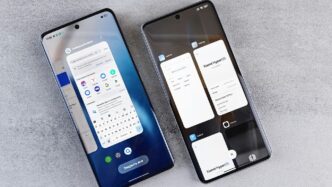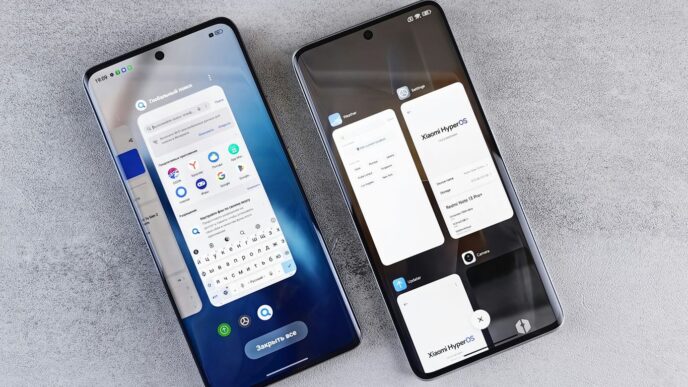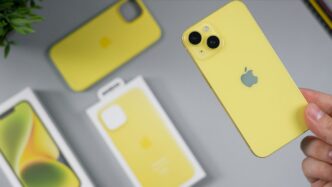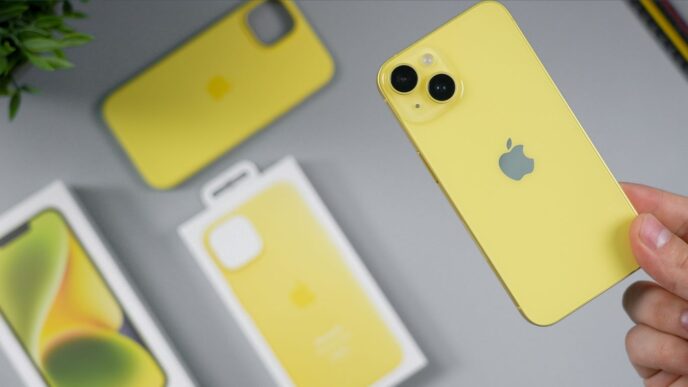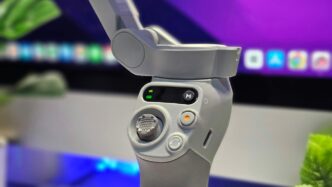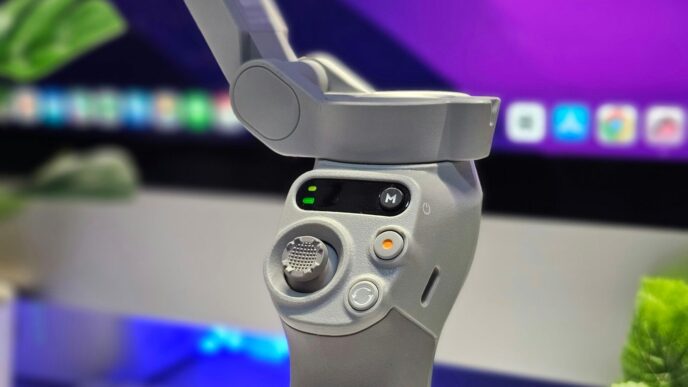Looking back at 2012, it’s pretty wild to see how much tech changed. It feels like just yesterday we were all getting used to new ways of doing things, and honestly, some of it was a bit clunky at first. But looking back now, you can really see how these developments set the stage for what we use every day. It wasn’t all perfect, but a lot of the technology that came out or really took off that year made a big difference.
Key Takeaways
- Smartphones really became the center of our digital lives, acting as our main way to get information and stay connected.
- New cameras like the Lytro and high-resolution TVs from Sony started changing how we capture and view images.
- Computers got sleeker and more powerful, with Windows 8 and Apple’s Retina MacBook Pro showing off new design ideas.
- Ways to fund and get creative projects, like Kickstarter and digital downloads, began to change how content reached people.
- Wearable gadgets and health trackers, such as the Nike Fuelband and Fitbit, started making fitness more measurable and engaging.
The Ubiquitous Smartphone Revolution
It’s hard to overstate just how much phones changed things in 2012. We saw more smartphones sold than PCs that year, which is pretty wild when you think about it. For a lot of people around the world, their phone wasn’t just another gadget; it was their very first computer, their main way to get online. It’s like the phone became the blueprint for what a computer even is for them.
Smartphones and Mobile Technologies Take Center Stage
This whole mobile thing really took off. It wasn’t just about making calls anymore. Your phone became your music player, your map, your camera, your notepad – pretty much everything. Think about it: you could check email, connect with friends, or just read something when you were bored, all from this one device. Plus, for folks in certain parts of the world, the phone was their only ticket to the internet. That meant developers had to get smart about making apps work well on smaller screens and with less power, which was a whole new challenge.
The Smartphone as a Universal Information Access Device
Seriously, the smartphone became the go-to tool for getting information. More people were using their phones to access the internet than computers or tablets combined. It really changed how we all get our news, find directions, or look up anything we were curious about. It’s like having a library, a newsstand, and a GPS all in your pocket. This shift also started messing with big industries, like music and books, as digital downloads became the norm.
The Rise of 7-Inch Tablets for Enhanced Mobile Consumption
While phones were getting bigger, there was also this interesting trend with 7-inch tablets. Some people found their phones too small for reading or watching videos, especially when they were on the go, like on a bus. But carrying a full-sized tablet everywhere felt like a hassle. The 7-inch size hit a sweet spot. You could still make a call without looking too out of place, but it was big enough to actually enjoy reading articles or watching videos. It offered a better mobile experience for consuming content without being too bulky.
Advancements in Visual and Imaging Technology
2012 was a pretty interesting year for how we capture and view the world. While some technologies were still finding their feet, others really started to show us what the future might look like. It wasn’t just about more megapixels anymore; companies were trying out genuinely new ideas.
Lytro’s Light-Field Camera Redefines Photography
Remember when focusing was a thing? Lytro tried to change all that with its light-field camera. Instead of just capturing a flat image, it recorded all the light information in a scene. This meant you could actually refocus your pictures after you took them. Pretty wild, right? It wasn’t perfect, and some folks thought it was more of a novelty than a practical tool, but it definitely made people think differently about how cameras work. It was a bold move away from the usual megapixel race, showing that there were other ways to innovate in photography. This kind of forward-thinking approach is what makes looking back at tech so interesting, and it’s a concept that continues to influence how we think about image capture today, even impacting areas like medical imaging analysis [8ce7].
Sony’s 4K TV Ushers in the Ultra HD Era
Forget 3D TVs – they didn’t quite take off like some expected. The real next step in television was Ultra HD, or 4K. Sony was right there at the front with its 4K TV, showing off a much sharper, more detailed picture. The catch? It was super expensive, costing around $25,000. Still, it was a clear sign of where TV technology was headed, offering a glimpse into a future with incredibly clear visuals. Cheaper versions started popping up, too, making the dream of Ultra HD a bit more accessible.
Nikon D800 Sets New Benchmarks for Image Sensors
On the still photography front, Nikon dropped the D800, and it was a big deal for image quality. This camera really pushed the boundaries for what could be expected from DSLR sensors. It offered incredible detail and low-light performance, setting a new standard for professional photographers. It wasn’t just about the camera body; the sensor technology inside was a significant leap forward, providing the raw data for truly stunning images. This focus on sensor quality is something that continues to drive innovation in digital cameras.
The Evolving Landscape of Computing
This year really felt like a turning point for how we interact with computers. It wasn’t just about desktops anymore; the game changed with new ways to use them.
Windows 8 Introduces a New Interface Paradigm
Microsoft dropped Windows 8, and it was a big shake-up. They went with this whole new tile-based interface, aiming to bridge the gap between PCs and tablets. It was definitely different, and people had strong opinions, either loving the fresh look or finding it a bit jarring compared to what they were used to. This move signaled a clear intention to make Windows more touch-friendly and adaptable across different devices. It was a bold step, trying to get ahead of the curve in a world where mobile was becoming king.
Apple’s MacBook Pro with Retina Redefines Laptops
Then there was Apple’s MacBook Pro with Retina display. Seriously, the screen quality was something else. The sharpness and clarity made everything look so much better, from text to photos. It really set a new standard for what a laptop display could be. It wasn’t just a minor upgrade; it felt like a significant leap forward in visual experience for everyday computer use. This push for higher resolution screens started to make older displays look pretty dated.
Ultrabooks Offer Power and Portability
And let’s not forget Ultrabooks. These machines were designed to be thin and light without sacrificing too much power. They offered a compelling alternative for people who needed a laptop that was easy to carry around but could still handle demanding tasks. It was all about finding that sweet spot between performance and portability, making computing on the go much more practical. This trend meant you didn’t have to choose between a powerful machine and one you could actually take with you easily. The advancements in cloud computing technologies also played a role in making these lighter devices more capable.
Crowdfunding and Digital Delivery Innovations
It’s pretty wild to think about how much things changed in 2012, especially when it comes to how we get our stuff. Remember when you absolutely had to go to a store for a CD, a book, or even a movie? That whole idea started to feel pretty old-fashioned this year. We saw a big shift towards digital delivery, meaning a lot more of our entertainment and media came straight to our devices.
Kickstarter Empowers Indie Creators
One of the coolest things that really took off was crowdfunding, and Kickstarter was leading the charge. It gave regular people, not just big companies, a way to get their ideas funded. Think about it: if you had a cool invention, a unique game, or a creative project, you could put it out there and ask people to chip in. This completely changed the game for independent creators. Instead of needing a big investor or a record label, anyone with a good idea and a bit of hustle could potentially bring their vision to life. It was all about community support and believing in something new. We saw everything from video games and films to gadgets and art projects get their start this way. It really showed that people are eager to support original ideas directly. You can find out more about the dynamics of these ventures on pages about crowdfunding success.
Digital Delivery of Previously Physical Goods
Beyond just funding, the way we received things also changed. Music had already made the jump to digital years before, but 2012 was a big year for books and even movies. E-books were flying off virtual shelves, with a significant chunk of book sales going digital. People were buying more books for their Kindles and iPads than ever before. Movies were following suit, with online views starting to outpace DVD sales for the first time. It felt like the beginning of the end for a lot of physical media. Suddenly, you didn’t need to wait for a DVD to arrive or go to the store to buy a book; it was all available instantly online. This made accessing content so much easier and faster, changing how we consume media daily.
The Dawn of Wearable and Health Technology

It feels like just yesterday we were all glued to our computers, but 2012 really started to shift things towards our wrists and our bodies. We saw the first real push into wearable tech that wasn’t just a novelty. Think about it: devices that could actually track your movement and give you data. It was pretty wild.
Nike Fuelband Encourages Fitness Engagement
The Nike Fuelband was a big deal. It wasn’t just a step counter; it tried to measure your overall activity using something called ‘NikeFuel’. The idea was to give you a single number that represented how active you were, no matter what you did. You could earn points, compete with friends, and it really made people think about their daily movement. It was a simple concept, but it got a lot of people moving more.
Autom and Fitbit Track Health Metrics
Then you had devices like the Fitbit and the Withings (which was sometimes called Autom in discussions about health tracking). These things were all about data. They tracked your steps, how far you walked, how many calories you burned, and even your sleep patterns. Suddenly, you could quantify your health in a way that was never really possible before. It was like having a personal coach on your wrist, constantly giving you feedback. People started paying way more attention to their habits, trying to hit certain numbers each day. It was a bit of a game-changer for personal health awareness.
Emerging Technologies and Future Concepts
2012 wasn’t just about what was already here; it was also a year where some really interesting new ideas started to get people talking and even trying them out. Think about it – things that seemed like science fiction just a few years before were starting to become a reality, or at least, a real possibility.
Near Field Communication (NFC) Gains Traction
Near Field Communication, or NFC, is one of those technologies that just sort of crept up on us. You might not have even noticed it at first, but by 2012, it was starting to show up in more and more places. Basically, it’s a way for devices to talk to each other when they’re really close, like just a few centimeters apart. This opens up a bunch of cool possibilities.
- Contactless Payments: Imagine tapping your phone to pay for your coffee instead of fumbling for cash or a card. That’s NFC.
- Easy Pairing: Connecting your phone to speakers or headphones became simpler. Just tap them together.
- Information Sharing: Quickly sharing contact details or website links by tapping phones.
It’s the kind of tech that makes everyday tasks a little bit smoother, and in 2012, we started seeing more of that convenience.
Google’s Project Glass Explores Augmented Reality
Then there was Google’s Project Glass. This was a big one, and honestly, pretty wild to think about. The idea was to create glasses that could show you information right in your line of sight. Think of it like a heads-up display, but for real life. You could see directions, get notifications, or even record what you were seeing, all without pulling out your phone.
It was still very early days, and definitely not something everyone was using, but it really got people thinking about what augmented reality could mean for us. Could we get information about the world around us just by looking at it? Project Glass was a bold step in that direction, showing us a glimpse of a future where our digital and physical worlds could blend together in new ways.
Information Extraction for Semantic Understanding
This one might sound a bit more technical, but it’s actually pretty important for how we find and use information. Basically, it’s about teaching computers to understand the meaning behind the words in text, not just the words themselves. Think about searching for something online – wouldn’t it be great if the search engine really understood what you were looking for, even if you didn’t use the exact right keywords?
In 2012, there was a lot of work happening in this area. The goal was to build systems that could pull out specific facts and relationships from large amounts of text. This could help with everything from making search results more accurate to helping researchers sift through mountains of scientific papers. It’s the kind of background technology that makes all the other digital tools we use work better.
Gaming and Entertainment Innovations
This year really felt like a turning point for how we play and consume entertainment. It wasn’t just about new consoles hitting the shelves, though that was a big part of it. We saw some genuinely new ideas about how we interact with games and media.
The Nintendo Wii U Controller Offers New Playability
The big story in gaming hardware was definitely the Nintendo Wii U. Its GamePad controller, with its built-in touchscreen, was a pretty wild idea. It wasn’t just a controller; it was like a second screen for your TV. This meant developers could do some neat tricks, like showing you inventory items or maps right on the controller’s screen, keeping the main TV display clean. It really changed how some games were played, offering a different way to manage your in-game actions.
- Asymmetric gameplay: One player could use the GamePad to see things others couldn’t, leading to unique multiplayer experiences.
- Off-TV play: You could continue playing on the GamePad screen even if someone else wanted to use the TV.
- New control schemes: The touchscreen and buttons allowed for more complex and intuitive controls in certain titles.
Microsoft Surface Tablet as a Computing Blueprint
While not strictly a gaming device, the Microsoft Surface tablet, especially its initial iterations, offered a glimpse into a future where tablets could do more. It was trying to bridge the gap between a traditional laptop and a tablet, running a full version of Windows. This meant you could potentially run desktop applications, including PC games, on a tablet form factor. It was a bold move that showed how devices could become more versatile. While it didn’t immediately take over the world, it certainly laid some groundwork for the hybrid devices we see today, blurring the lines between work and play. It was an interesting experiment in how computing could evolve for entertainment and productivity alike. The idea of a single device handling both tasks was pretty compelling, even if the execution was still finding its feet. It made you wonder what other devices would try to follow this path in the coming years, especially with the growing popularity of mobile gaming and the need for more powerful portable devices. The potential for a device that could be both a gaming console and a productivity tool was really starting to feel within reach. You could even connect accessories like keyboards, making it feel more like a laptop replacement than just a media consumption device. This flexibility was a big deal for people who wanted one device to do it all, and it definitely got people thinking about the future of personal computing and how it would integrate with entertainment. The Wii U was also part of this broader shift, showing that new hardware could indeed change how we interact with our favorite pastimes. It was a year where the lines between different types of computing and entertainment devices started to get really blurry, and the Surface was a big part of that conversation.
Educational Technology’s Expansion

This year, we saw a big shift in how people learn, especially with the rise of online courses. Massive Open Online Courses, or MOOCs, really started to take off in 2012, making education from top universities available to anyone with an internet connection, and often for free. It’s pretty amazing when you think about it – no matter where you are, you could potentially learn from some of the best minds out there.
This trend is changing things quite a bit. It means more people can get educated, which could lead to more collaboration and faster progress in different fields. It’s like the classroom doors just swung wide open for the whole world.
Here’s a quick look at why this is such a big deal:
- Accessibility: Learning materials are no longer limited by physical location or expensive tuition fees.
- Flexibility: Students can learn at their own pace and on their own schedule, fitting education around their lives.
- Variety: A huge range of subjects and specialized topics are becoming available, from coding to ancient history.
It feels like we’re just scratching the surface of what’s possible when education becomes this accessible.
Wrapping Up 2012’s Tech Landscape
So, looking back at 2012, it’s clear that a lot was happening in the tech world. We saw big pushes in mobile, with smartphones becoming even more central to our lives, and tablets starting to find their place. Things like Kickstarter also showed how new ideas could get off the ground. While some technologies were still finding their footing, like advanced cameras or new gaming consoles, the groundwork was definitely being laid for what was to come. It wasn’t always about flashy new gadgets; sometimes it was about making existing tech better or more accessible. All in all, 2012 was a year where many seeds were planted, shaping the tech we use today.
Frequently Asked Questions
What made smartphones so special in 2012?
In 2012, smartphones really became super important. They weren’t just phones anymore; they were like mini-computers in our pockets. We used them for everything: getting information, talking to friends, taking pictures, and even finding our way around.
Were there any cool new cameras or TVs in 2012?
Yes, new cameras came out that changed how we take pictures. One camera, the Lytro, let you change where the focus was *after* you took the photo, which was a totally new idea! Also, Sony introduced TVs with super sharp pictures called 4K, and Nikon made a camera that took incredibly detailed photos.
How did computers change in 2012?
Computers got better too! Windows 8 came out with a new look and feel. Apple made a new MacBook Pro laptop with a super clear screen called Retina, and other companies made thin and fast laptops called Ultrabooks. These made computers more portable and powerful.
What were some new ways people shared and funded ideas in 2012?
People started using websites like Kickstarter to help fund new projects, especially creative ones like games or movies. This meant that regular people could help bring new ideas to life. Also, more things that used to be physical, like music or movies, started being sold and delivered online.
What were the first wearable gadgets like in 2012?
2012 saw the start of gadgets you wear. The Nike Fuelband helped people track their exercise and activity, encouraging them to be more active. Devices like Fitbit also started tracking health information, making it easier to see how healthy you were.
What new or future technologies were emerging in 2012?
Some exciting new technologies were just starting to appear. Near Field Communication (NFC), which lets devices talk to each other when they’re close, started becoming more common. Google also showed off Project Glass, which were like special glasses that could show you information right in front of your eyes.







